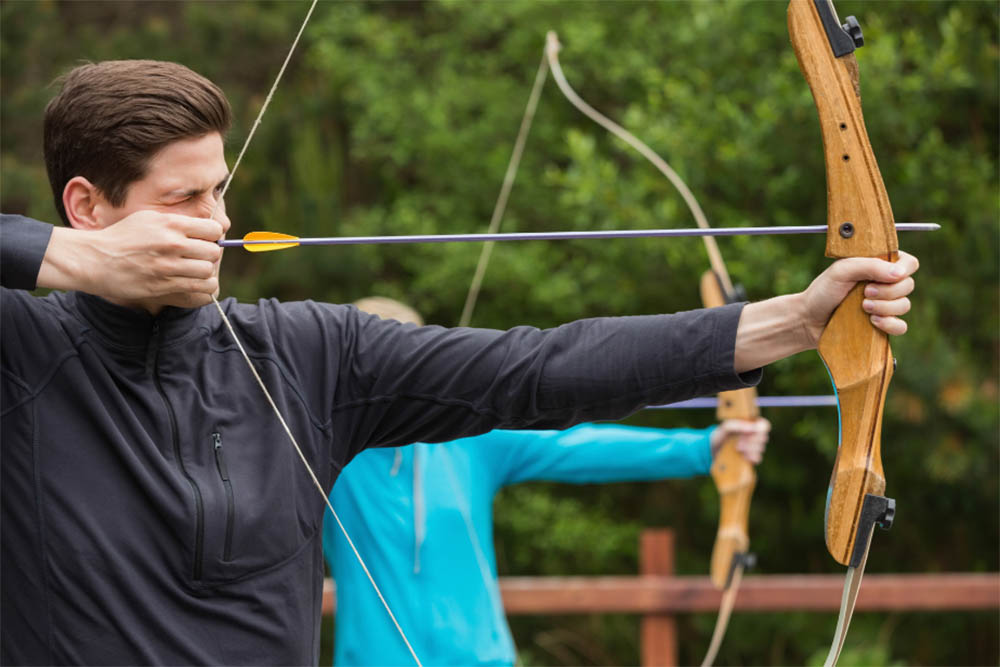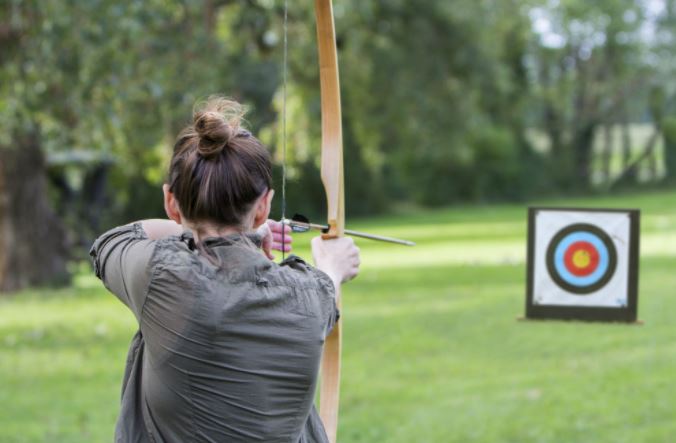The draw weight is one of the most important figures you need to know in archery. It will determine whether or not you can actually draw the bow. ArcheryEdge.com goes into detail below.
The draw weight of a bow tells you how much force you need to use to pull the bow string back. It is measured in pounds and marked on the limb of the arrow.
For recurve and longbows, the draw weight changes depending on how far you draw back. This makes sense when you think about it. The further back you pull the bow string, the harder it is to draw.

On recurve and longbows, the draw weight is measured at 28 inches of draw length. This means that they measure how much force it takes to pull the bow string to 28 inches. This will be the number printed on the limb and advertised on the product listing.
Naturally, if you draw shorter or longer, the draw weight will change by a few pounds.
With compound bows, the draw weight is fixed no matter what draw length you use. This means that if a bow is advertised as a 50lb draw, it’ll be 50lbs whether you draw at 26 inches or 32 inches.
You can adjust the draw weight of a compound bow by adding or removing flex from the limbs. This is best done by professional bow technicians as you’ll want to get the draw weight exact.
Most compound bows have an adjustment range of about 10lbs, but there are bows out there with a much bigger range. These bows can be adjusted over 50lbs or more. This means that a technician could change the draw weight from 10lbs to 60lbs.
Getting the right draw weight is key to shooting at your best. If the draw weight is too heavy, you won’t be able to pull the string, and you’ll have little to now speed on your shots.
If the bow weight is too low, then you’re wasting a lot of potential energy.
When should I increase the draw weight on my bow?
There are a few reasons why you’d want to increase the draw weight on your bow. Most of the time it comes down to wanting to progress.

Firstly, you should increase the draw weight if you can shoot for a long time without fatigue. This means that your muscles aren’t working to draw the bow string. This might seem like a good thing, after all, your arms aren’t aching anymore!
The issue is your muscles are capable of more which means that you are wasting their potential by sticking at your current draw weight.
Increasing your draw weight has a number of advantages outside of bragging rights. It means that you can shoot further, faster, and more accurately.
Speaking of distance, if you need to shoot further distances, you need to increase your draw weight. There’s only so far 20lbs of force can fling an arrow. If you don’t increase the draw weight, you’ll be limited in terms of range.
If you’re finding that your arrows consistently fall short of where you’re aiming, increase the draw weight. If you want to increase your range, increase the draw weight.
The other reason why you might need to up your draw weight is for hunting.
Higher draw weights put more power into your shot. This is important in hunting as it will determine what kind of prey you can shoot.
If your draw weight is too low, you don’t have enough stopping power to humanely kill larger prey. Not only is this horrific for the animal, but it also means that they could get away.
It is better for all involved if you increase your draw weight.
When it comes to increasing your draw weight, you need to take things slow. Don’t try jumping up 5lbs. You’ll end up fatigued and frustrated.
Make the changes incrementally and make sure you are practicing and working out at the same time. You’ll need to keep working your arm, neck, shoulder, and back muscles so that they keep up with the increased weight.
How do I know my draw weight?
If you’re looking for the weight you are currently drawing at, check the limb of your bow. On recurve and longbows, it will be written as 35# 28”. This means that the bow draws at 35lb at 28 inches.

On a compound bow, the draw weight may be listed on the limb or the product listing.
The problem with draw weight is that it can be changed. To be totally sure of your draw weight, you need to use a weight scale.
You can buy digital weight scales online for a few dollars. They are easy to operate and simple to read.
To measure your draw weight, attach the hook of the weight scale to the arrow nock on your string.
Raise your bow and draw using the proper form. Don’t get sloppy just because there’s no arrow. This will not give you an accurate reading.
Most digital scales will display the measurement for a few moments after drawing. This gives you time to lower your bow and read the display. If the scale does not hold the reading, get someone to read while you draw the bow.
You’ll need to perform this a few times to get an accurate reading. If you only measure one time, you’re opening yourself up to the tricky world of human error.
Make a few measurements and take the average weight to compensate for human error.
To check what weight you should be pulling, attach the scale as before and draw to the 28-inch mark.
If this is too easy, draw back further and note the weight where you start to feel uncomfortable. You should be able to hold your draw weight for about 30 – 45 seconds.
Use this measurement to look for a new recurve bow with the correct draw weight. If you use a compound bow, you may be able to adjust the draw weight rather than having to buy new.
If the draw weight is too hard, pull the string to a point that you feel comfortable with. Again, note the draw weight and buy your new bow using that measurement.

